First caudex plant - Operculicarya Decaryi (Elephant tree aka Jabily)
- ShajanV

- Mar 27, 2020
- 4 min read
Operculicarya Decaryi was my first ever caudex plant that I wanted. How did I come about knowing about this plant? Well I wanted a plant that has minute leaves, a good size caudex/root system and branches that I could freely wire, bend and shape to form the a tree I desired... And so i took to Google and googled "trees with caudex that can be found in Australia". It came up with a few different trees and the elephant tree caught my attention due to its unique characteristics.
The Jabily or "elephant tree" (Operculicarya decaryi), is a thick-stemmed succulent plant species in the family Anacardiaceae, named after the botanical collector Raymond Decary. It is a natural succulent bonsai tree or shrub found in Madagascar with thickened roots. It is a very slow growing, deciduous, dioecious pachycaul, looking somewhat like a dwarf baobab, rarely exceeding 5 metres tall, but sometimes taller (up to 15 meters). It has small (less than 2 mm) red flowers in winter.
This was also my first bonsai DIY project. I knew what Bonsai was but had absolutely zero experience in making one. Youtube videos were basically my Master that taught me the 101 staging styles and wiring techniques. So that journey began...
As always eBay was my best friend and I purchased the most gorgeous specimen in May 2017.
10th May 2017 - Purchased my first caudex tree and 1st attempt at Bonsai.

This was the the original picture of the tree that was being sold. A 70cm tall plant with its branches folding in all directions in an upright position. But look at that gorgeous root structure!
I wasn't sure how the caudex would look except that it was gnarly looking. Only when I received it that I named it the "Tree of Life". You will understand why I named it that later on.
11th May 2017 - 1st attempt at wiring the tree
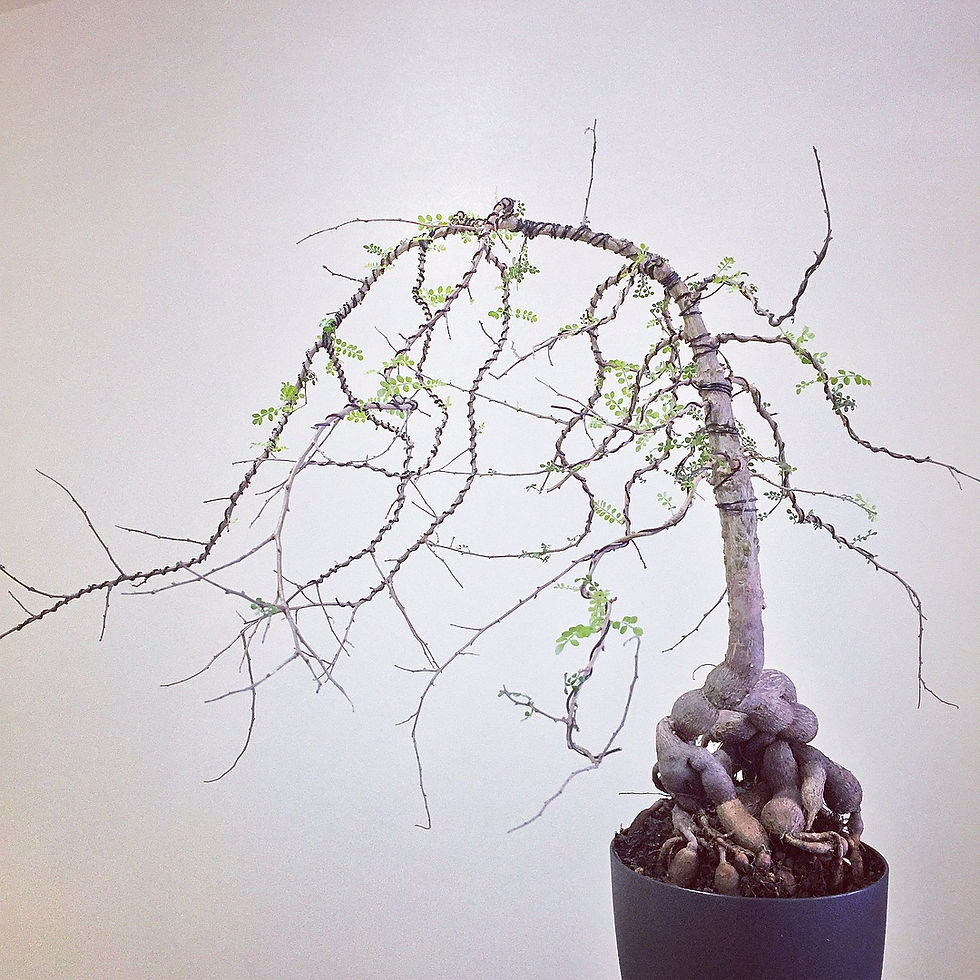
Bought some bonsai wires from Bunnings and took me 6 hours to wire and bend the tree and its trunk. At this point I did not bend the main trunk any further as it was too rigid and fear of snapping it. Potted it in a simple plastic pot at this stage and praying that this plant would survive from all the torture inflicted to it.
Operculicarya decaryi is fairly easy to grow both indoors, as well as outdoors. In the winters it is deciduous, except in very tropical areas. It cannot tolerate freezing conditions. So this tree was perfect for my indoor living conditions where I grow them under my LED lighting.
This tree also prefer a porous gritty or sandy soil with at least 50% inorganics, and requires excellent drainage. I use 20% succulent soil, 20% coarse river sand and 60% pumice/diatomite/scoria mix. I also added some slow release fertiliser pellets for good growth and health.
When leaves are still present, I water it deeply once weekly. Don't worry if you forget to water them for weeks as they are quite hardy. I also liquid feed it once every month just to give it that added nutrients. Ease the watering as the leaves starts to drop and stop watering them completely in winter. Start watering them in late spring when the leaves begins to sprout.
6th Sept 2017 - 4 months later and new leaf growth
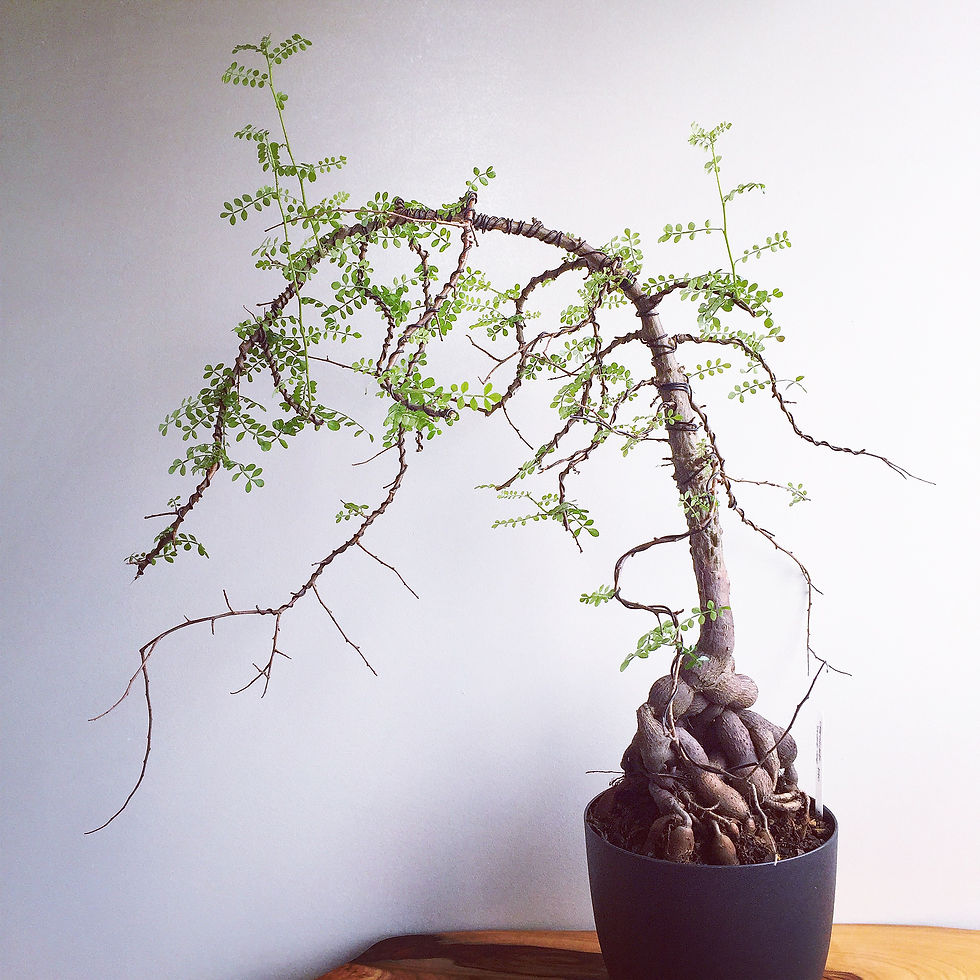
4 months had passed and signs of new leaves sprouting. I was totally relieved that this tree had survived my gruelling bending and wiring previously.
25th October 2017 - A pot that was meant to be
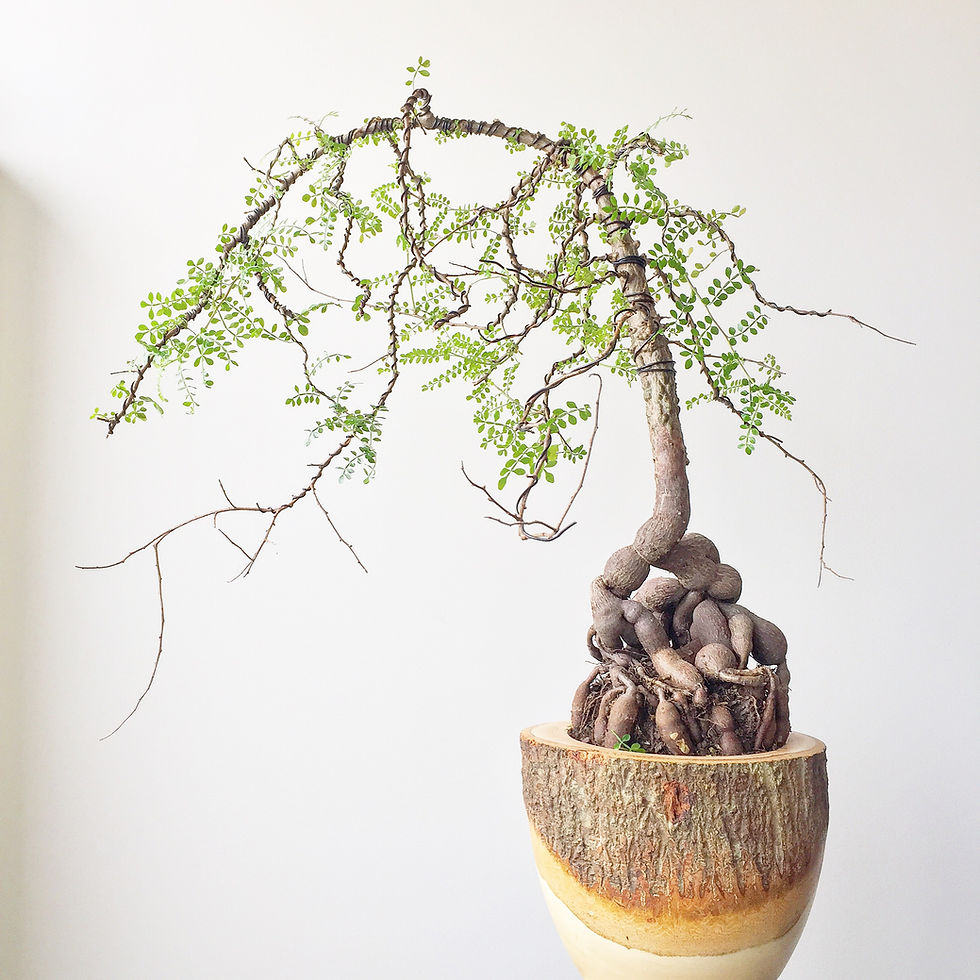
Went to the Finders Keepers Market at the Royal Exhibition building and found this beautiful handcrafted wooden planter bowl by Corestyle. They make the most awesome wooden pots ever. The caudex fitted snugly into the pot like it was meant to be together. I deliberately potted the caudex about 1.5 inches higher than what it was previously to expose more of its beautiful roots.
January 2018 - "Tree of Life"
I named this bonsai the "Tree of Life" as there is family of four under that gorgeous canopy. The picture on the right shows the Dad (blue) hugging his daughter (red) in air and the Mum (green) hugging her son (yellow).
15th December 2019 - 1.5 years on
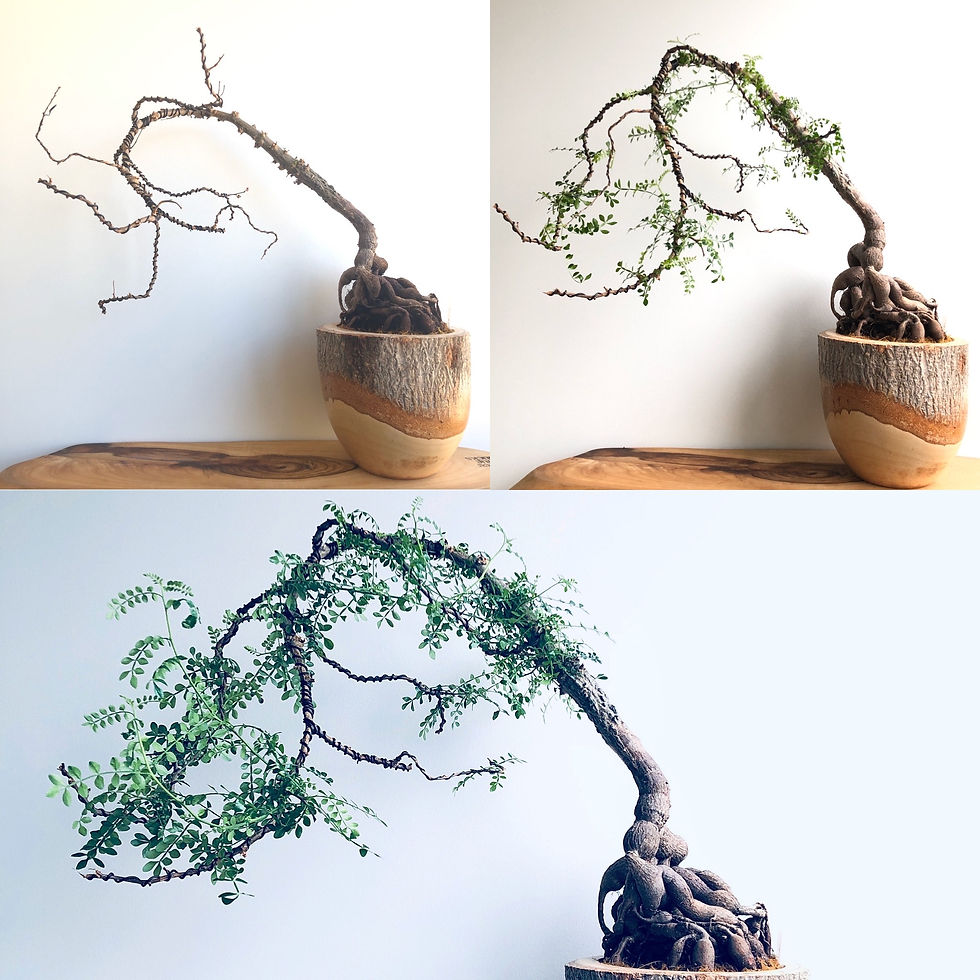
1.5 years after I purchased the plant, I bent the vertical trunk further to give it a windswept look and the U-shaped curve had become more pronounced adding to the drama. What was once a tall straight tree is now a wind-swept tree.
In late Spring (October) before the new leaves starts to sprout, small (less than 2 mm) flowers starts to bloom. They are unisexual, inconspicuous and dark red. The pedicels are articulated and have multicellular glandular hairs, which also occur on the bracts, bracteoles and perianth. The inflorescence is at the end of the short branches and often consist of about five flowers as seen on the left picture.
19th March 2020 - Proud plant daddy moment
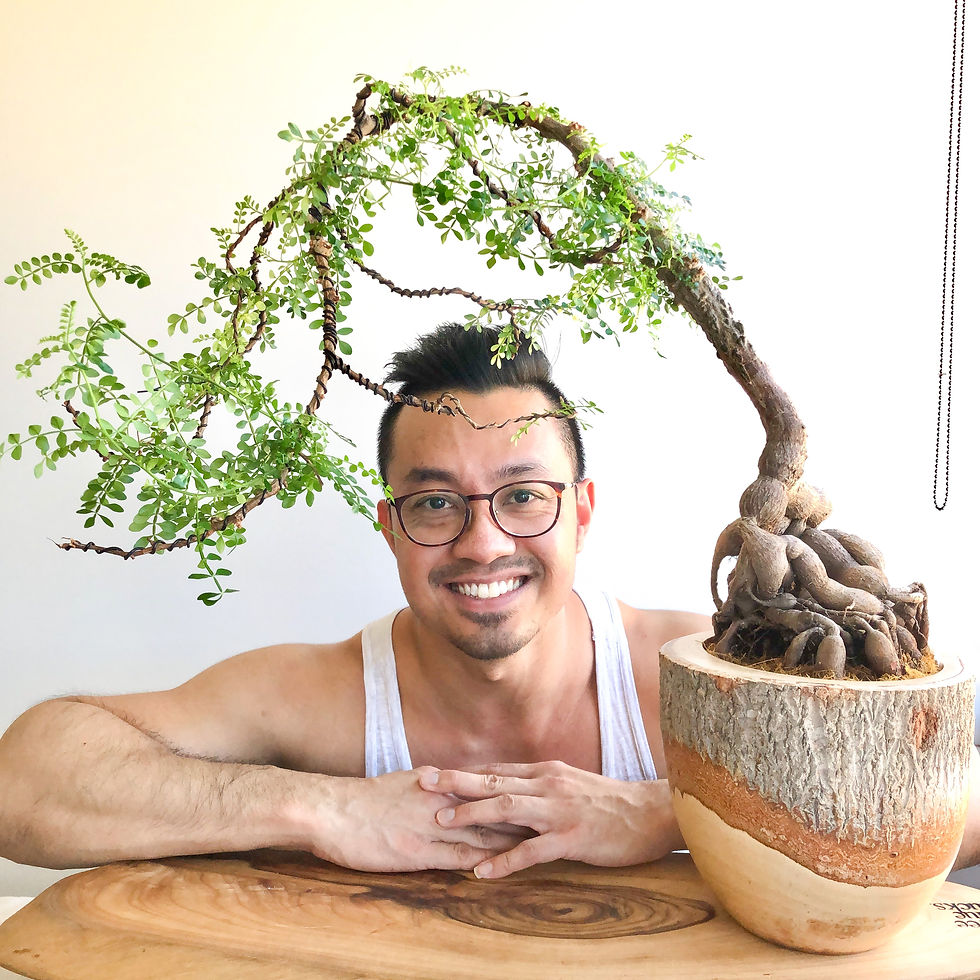
This picture shows the current shape and structure of the elephant tree. The tree of life to date, is one of my proudest work. What was once a straight rigid tree is now soulful. A windswept-look effect that encapsulates love and life beneath its canopy (family of four under the tree enjoying themselves).
I hope you enjoyed the journey through my vision and hopefully inspired you to try your hands on a bonsai one day. Feel free to ask me any questions about this post.
See y'all soon! Xx











Comments